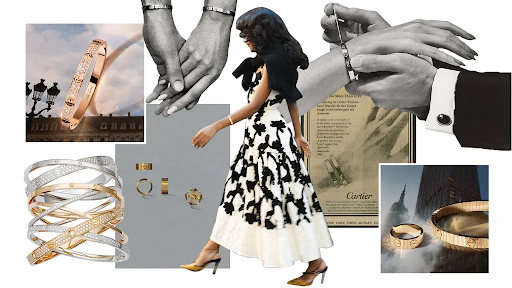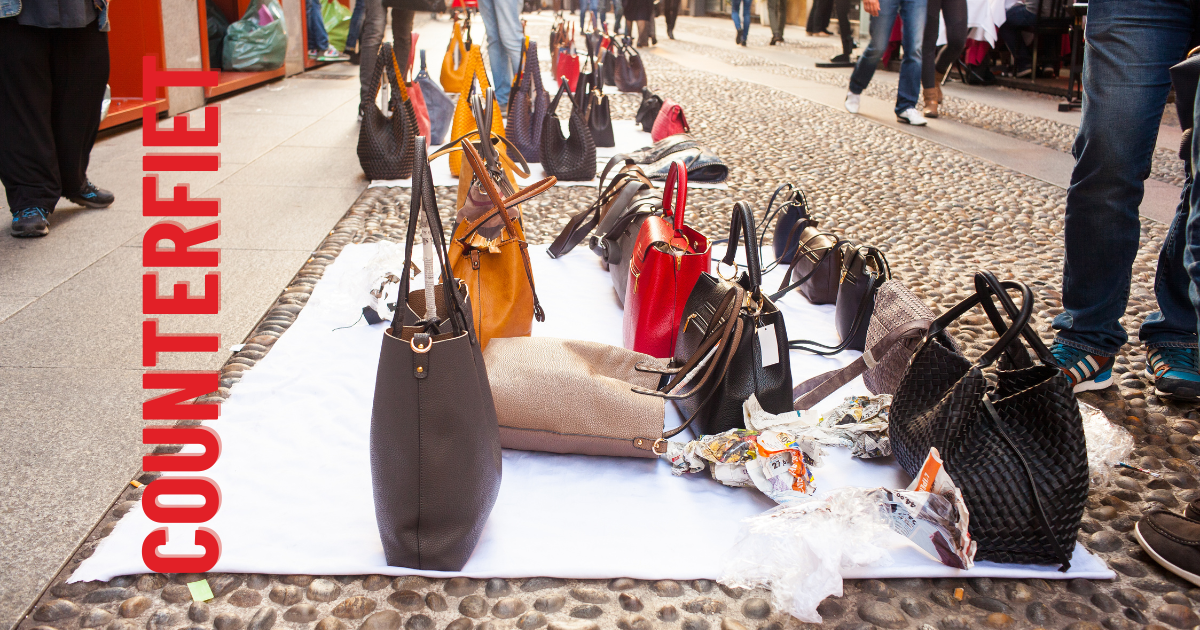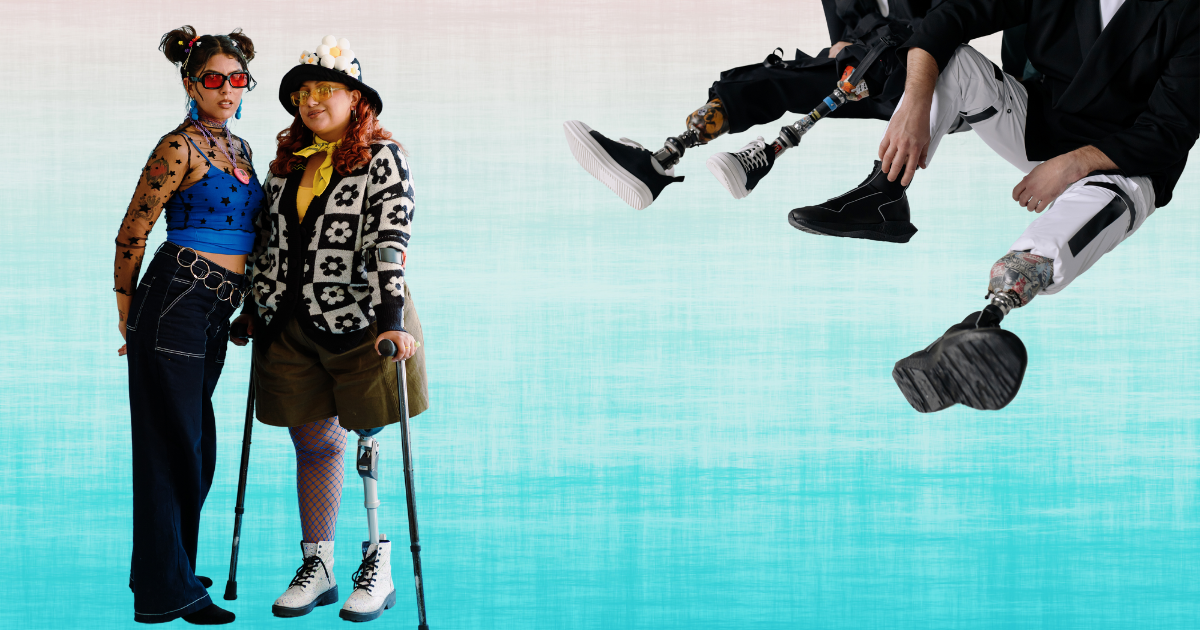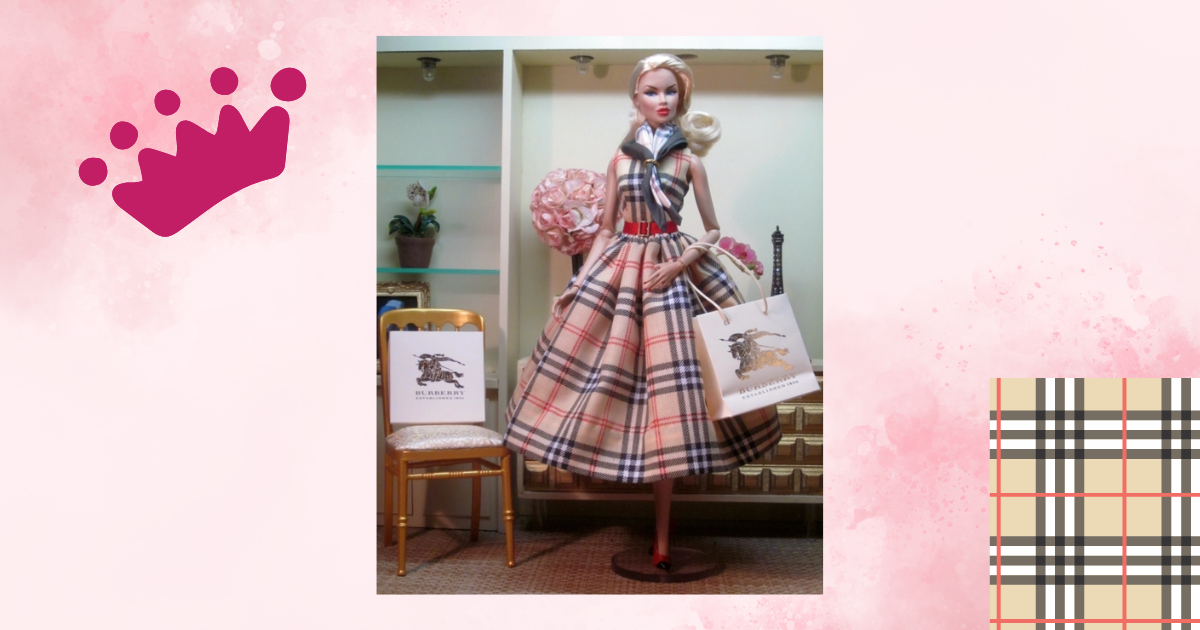Introduction:
In 2019, the value of the global counterfeit goods market surpassed the GDP of both Austria and Ireland, with the fashion industry bearing the brunt of its impact. In fact, as many as 10% of all branded goods sold may be counterfeit, and 80% of us have owned at least one fake item in our closet or household.
Counterfeiting refers to the manufacturing of fakes or unauthorized replicas of a product. Although far inferior in quality and value, these counterfeit goods seek to profit off the superior value of the original product by closely imitating it. This implies the infringement of the original owner’s intellectual property rights and trademarks.
Counterfeit goods are prevalent across all economies through all means of distribution. However, according to a 2021 report published by EUIPO and OECD, China is the primary economy of origin. The counterfeited goods are transported through complex trading routes which pass through important transit countries such as Hong Kong, Singapore, and UAE. These goods are, then, made available everywhere from street markets to mall displays.
E-commerce has been heavily exploited by counterfeiters to sell their products to customers. Social media sites like Instagram and Facebook Marketplace are significantly unregulated and lack adequate safeguards against counterfeit goods, making customers vulnerable to scams. Special hashtags are used to list counterfeit luxury shoes, bags, and attire on social media to evade the algorithm. Along with that, openly marketed “dupes” of luxury products are available on e-commerce sites such as Aliexpress, Shein, and Amazon.
This article focuses on the prevalence of counterfeit Versace goods available online. It examines the proactive measures taken by the brand to combat counterfeiting and highlights the extent of fake Versace products online. A comprehensive analysis is provided of the key differences between genuine and fake products, equipping readers with the information needed to make smart purchasing decisions. Finally, the article concludes with the legal and ethical issues behind counterfeiting and discusses potential strategies to combat this pervasive problem.
Versace and the Battle Against Counterfeits:
Versace is an Italian luxury brand with over four decades of expertise in haute couture, accessories, and ready-to-wear. Found by Gianni Versace, the brand is known for its bold, flashy prints and bright colors. Its iconic Medusa logo and maximalist baroque prints are quintessential to the brand identity. The brand continues to set and shape fashion trends under Donatella Versace through innovative collections throughout the year.
Versace has a diverse product portfolio, featuring clothing for men, women, and kids, along with bags, footwear, accessories, watches, eyewear, perfumes, lifestyle items, and soft home furnishings. The brand follows a premium pricing strategy, targeting the upper segments of society with high purchasing power. These customers are ready to pay high prices for products of higher quality and exclusivity. Hence, the luxury price point is not only for the tangible craftsmanship and quality of the product but also for the intangible status symbol associated with Versace.
The fashion house is based in Italy but its commercial presence, sales, and other supply chain activities span across the world. This includes its 200+ boutiques and 1500 wholesalers globally. Versace has also collaborated with H&M to produce cheaper and more accessible collections. In 2000, Versace opened the Palazzo Versace, a hotel that provided tourists an opportunity to “experience the complete Versace lifestyle”. This unique retail experience was subsequently expanded to Dubai, UAE, and Macau, China.
Along with physical retail stores, the brand also has an official website for all its products. Versace products are to be sold exclusively in Versace boutiques, on versace.com, and through authorized retailers. But the huge second-hand, vintage, and thrift market continues to be unregulated and open for counterfeit goods.
Versace has fought multiple legal battles against counterfeiting. In 2013, after four and a half years of legal back-and-forths, Versace won the case against Griffith Suisse Luxury Group in Northern California. The Griffith Suisse Luxury Group had sold counterfeit Versace merchandise on eBay in the Philippines and Australia. The group is now prohibited from using Versace trademarks and using e-auction sites such as eBay. In April 2020, Versace filed a case against multiple domains on the grounds of “wrongfully reproducing and (using) counterfeit Versace trademarks” to lure in customers and sell duplicate Versace products of inferior quality. Versace argues that consumers are tricked into thinking that the products sold in these domains are authentic branded products, and are later scammed by the sellers. This affects the brand reputation of Versace and lets these fraudulent domains profit off the billions of dollars spent by Versace on branding, trademarks, and promotions.
Online Counterfeit Market; Size, Sites & Price
The e-commerce industry plays a substantial role in global economies, contributing around 30% of the world’s GDP through online channels. During the pandemic years, online transactions, particularly Business to Consumer (B2C) transactions, witnessed a significant surge of approximately 20%. However, the expansion of the internet also brings along the unfortunate consequence of facilitating illegal activities such as the sale of counterfeit products. According to a study conducted by EUIPO-OECD, analyzing data from 2017 to 2019, it was revealed that more than 50% of counterfeit goods seized while in transit to the European Union were associated with online transactions.
The sheer size of these illegal online operations cannot be ignored. Among the most frequently utilized platforms for the sale of counterfeit goods are global websites like eBay, Shopee, and Aliexpress. Regional social media and e-commerce sites such as Tokopedia (Indonesia), IndiaMART (India), and Pinduoduo (China) are also commonly involved. Additionally, international social media platforms like Facebook and Instagram contribute to this issue. Although e-commerce sites such as Amazon and Aliexpress are investing in AI and other technology to detect counterfeits sold on their platform, social media continues to be the wild west when it comes to regulation and intervention.
Counterfeiters create multiple social media accounts and entice consumers by posting pictures of the products. These pictures may be directly taken from the original brand’s website, or simply be enticing pictures of the counterfeit itself. These would then lead the customers to websites that sell these counterfeit goods. Platforms such as Instagram do not require much verification to create an account, and very little regulation is put into place to identify and delete counterfeit posts and accounts. These accounts also use specific hashtags such as #replica, #mirrorbag, #mirrorquality, #versacedupe, and more to sell their wares.
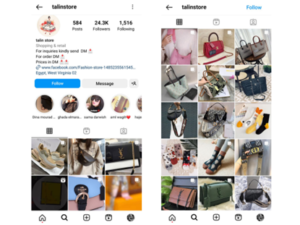
A highly successful and active account selling counterfeit bags of multiple luxury brands
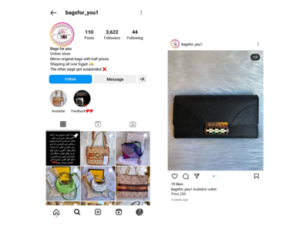
An Instagram account selling an imitation Versace purse for $8, along with other brands.

An Instagram account dedicated to the sale of counterfeit luxury bags
The prices of counterfeit goods can vary widely and are influenced by several factors, including the location, availability, quality of the counterfeit product, and the seller’s discretion. Most Instagram sellers that were discovered during the research were from Egypt, Latin America, and Pakistan, retailing counterfeit purses for as low as $8 and bags for $90. Some of the most counterfeited brands include Gucci, Dior, Louis Vuitton, Guess, and Chanel.
Another hotspot for counterfeiting is eBay, which is overridden with imitations despite eBay’s efforts to combat fakes by outsourcing protection and authenticating products. Buying products online means one doesn’t get to feel the product’s quality before committing financially to it. Many eBay listings of Versace products don’t list out adequate authentication information. But the e-commerce platform is working on minimizing these errors. According to eBay’s 2021 report, its new AI technology has blocked 88 million suspected counterfeit items from being sold.
Differentiating Original and Imitation Versace
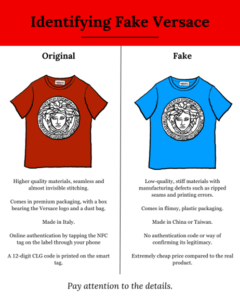
Issues Posed by Counterfeiting; Legal, Consumer, Ethical
Legal Issues in Counterfeiting in the Fashion Industry:
Counterfeiting in the fashion industry poses significant legal challenges. The production, sale, and distribution of counterfeit fashion products infringe upon intellectual property rights, including trademarks and copyrights. This illicit activity leads to revenue loss for legitimate fashion brands and hampers innovation and creativity within the industry. Companies must invest substantial resources in legal battles to protect their brand reputation and combat counterfeiters. Moreover, the counterfeit trade often involves organized crime networks, making it a complex issue for law enforcement agencies to address.
Consumer Issues in Counterfeiting in the Fashion Industry:
Counterfeit fashion products pose numerous risks to consumers. These items are often of inferior quality, lacking the craftsmanship, durability, and safety standards of genuine products. Consumers purchasing counterfeit fashion goods are deceived into believing they are buying authentic products at a lower price, only to be disappointed by substandard materials and poor workmanship. Furthermore, counterfeit fashion products lack the warranties, guarantees, and after-sales support offered by legitimate brands. Consumers who unknowingly purchase counterfeit items may also face legal consequences for unknowingly possessing counterfeit goods.
Environmental and Ethical Issues in Counterfeiting in the Fashion Industry:
Counterfeiting in the fashion industry has detrimental environmental and ethical implications. Counterfeit production often involves low-quality materials, hazardous chemicals, and unethical labor practices. The counterfeit trade contributes to increased pollution and waste, as counterfeit items are typically discarded quickly due to their poor quality. Moreover, the use of counterfeit labor often involves exploitation, including low wages, poor working conditions, and even forced labor. Counterfeiting undermines the efforts of fashion brands to implement sustainable and ethical practices, perpetuating an unsustainable cycle of production and consumption.
Addressing these issues requires a multi-faceted approach. Collaboration between fashion brands, law enforcement agencies, and regulatory bodies is essential to enforce intellectual property rights, identify and shut down counterfeit operations, and raise awareness among consumers. Implementing stricter regulations and penalties can act as a deterrent to counterfeiters. Educating consumers about the risks and consequences of purchasing counterfeit goods is crucial to combat the demand for such products. Additionally, promoting sustainable and ethical fashion practices can provide consumers with alternatives to counterfeit products and contribute to a more responsible and transparent industry.
References:
OECD/EUIPO (2021), Misuse of E-Commerce for Trade in Counterfeits, Illicit Trade, OECD Publishing, Paris, https://doi.org/10.1787/1c04a64e-en.
OECD/EUIPO (2021), Global Trade in Fakes: A Worrying Threat, Illicit Trade, OECD Publishing, Paris, https://doi.org/10.1787/74c81154-en.
Zandt, Florian. “Infographic: Fake Goods Market Worth More than Ireland’s Economy.” Statista Infographics, Statista, 22 Apr. 2022, www.statista.com/chart/27289/global-trade-volume-with-counterfeit-goods-compared-to-gdp-of-selected-countries-regions/. Accessed 27 June 2023.
“In New Lawsuit, Versace Says Counterfeiters Are “Depriving It of Its Right to Fairly Compete” in the Market.” The Fashion Law, 1 Apr. 2020, www.thefashionlaw.com/amid-covid-19-turmoil-versace-is-fighting-against-the-degradation-of-the-brand-value-in-new-counterfeit-suit/.
“Instagram Hashtags Are Being Used to Sell Fake Louis Vuitton, Supreme & Gucci.” Highsnobiety, Highsnobiety, 30 Apr. 2019, www.highsnobiety.com/p/instagram-designer-fakes/. Accessed 29 June 2023.
Muret, Dominique. “Versace Claims Victory in Fight against Counterfeit Goods.” Fashion Network, 31 May 2013, ww.fashionnetwork.com/news/versace-claims-victory-in-fight-against-counterfeit-goods,333134.html.
Sewell, Rob. “Counterfeit Goods Online: The Scale of the Problem and How to Prevent It.” SmartFrame, 12 May 2022, smartframe.io/blog/counterfeit-goods-online-how-big-is-the-problem-and-how-can-you-combat-it/.
Sherwood, Alice. “Spot the Difference: The Invincible Business of Counterfeit Goods.” The Guardian, 10 May 2022, www.theguardian.com/fashion/2022/may/10/spot-the-difference-the-invincible-business-of-counterfeit-goods.
Teo, Claris. The Fight against Counterfeit Goods on Instagram. Feb. 2022.
“Versace Authenticity – Authentication System | Official Website.” Versace, 2023, www.versace.com/international/en/customer-care/authenticity.html. Accessed 29 June 2023.
2021 Global Transparency Report. eBay. 2022.
Author: Srinidhi Madurai K.



